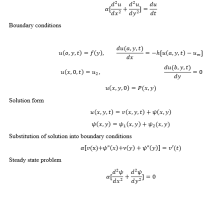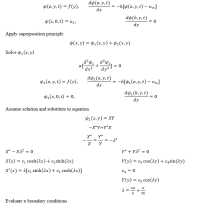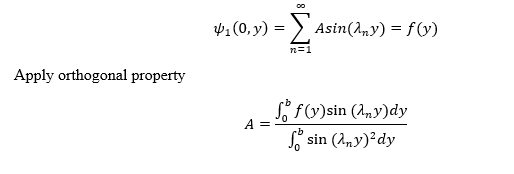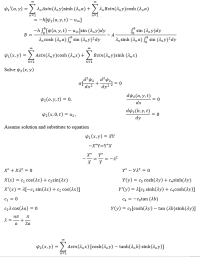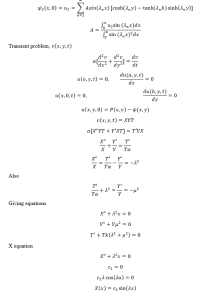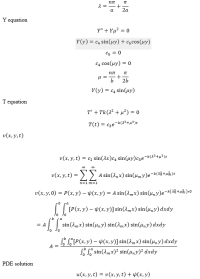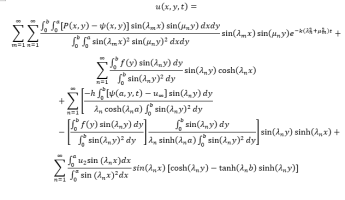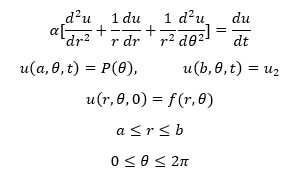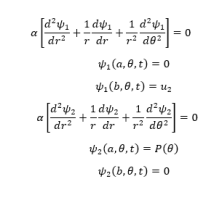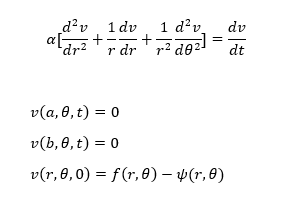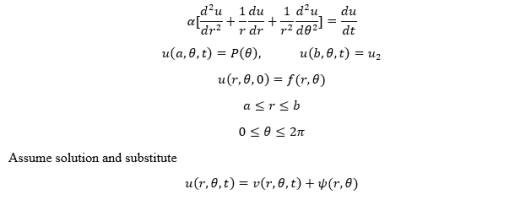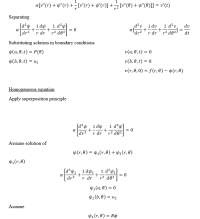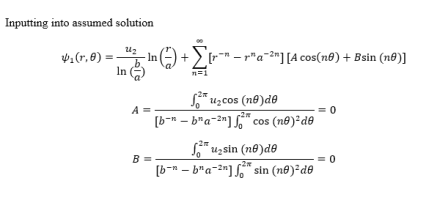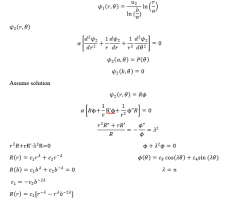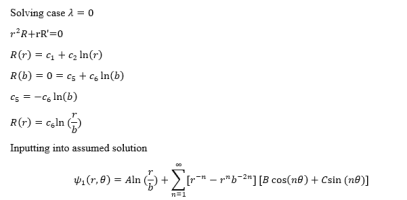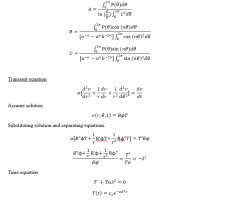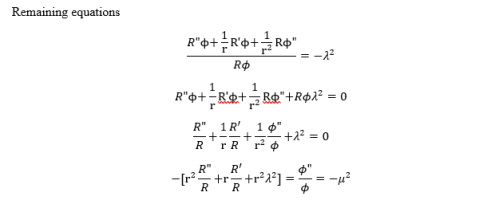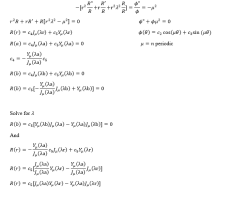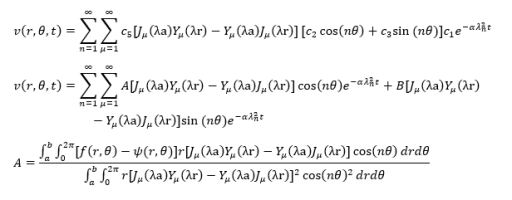I will try those. I will also try the problem I made up.
Thanks, for all your help so far. You've really helped me.
I have never seen a two dimensional heat equation that has nonhomogeneous boundary conditions in rectangular coordinate system. But by playing around I could force the boundaries to be homogenous. It is similar to your idea of the superposition principle, but an easier version.
Let [imath]u(x,y,t) = g(x,y) + v(x,y,t)[/imath].
After substituting this into the original differential equation (first equation) and applying the boundary conditions, you will get these two equations:
[imath]\displaystyle \frac{\partial^2 g}{\partial x^2} + \frac{\partial^2 g}{\partial y^2} = 0[/imath]
[imath]g(0,y) = f(y)[/imath]
[imath]g(1,y) = 0[/imath]
[imath]g(x,0) = 0[/imath]
[imath]g(x,1) = g(x)[/imath]
[imath]0 < x < 1[/imath]
[imath]0 < y < 1[/imath]
-----------------------------------------
[imath]\displaystyle \frac{\partial^2 v}{\partial x^2} + \frac{\partial^2 v}{\partial y^2} = \frac{\partial v}{\partial t}[/imath]
[imath]v(0,y,t) = 0[/imath]
[imath]v(1,y,t) = 0[/imath]
[imath]v(x,0,t) = 0[/imath]
[imath]v(x,1,t) = 0[/imath]
[imath]v(x,y,0) = h(x,y) - g(x,y) = m(x,y)[/imath]
[imath]0 < x < 1[/imath]
[imath]0 < y < 1[/imath]
[imath]t > 0[/imath]
----------------------------
The first equation is just a Laplace equation that can be solved by the same method we have used in the OP problem. And the second equation is the normal two dimensional Heat equation that we know and it can solve by separation of variables.


